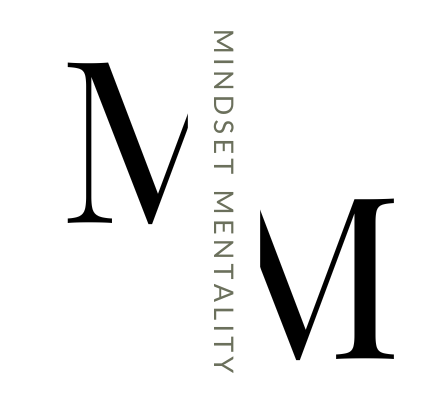Changing Your Perspective: How Shifting Your Viewpoint Can Transform Your Life
Welcome back to our blog series on cultivating our Mindset Mentality House—a space where resilience, positivity, and growth meet. In previous discussions, we envisioned our mindset as a house, exploring its foundation—your core beliefs, the walls that fortify this mental space—the powerful interaction between thoughts and actions, and the significance of resilience, the roof protecting your mindset from life’s challenges.
Now, in this post, we will delve into the transformative power of perspective—shaping a mindset that paves the way for happiness and fulfillment. Cultivating an empowering outlook involves intention and practice, as our interpretation assigns meaning to neutral circumstances. A shift in perspective not only opens new possibilities but also provides a conscious foundation for improving various aspects of life, from relationships and careers to health and happiness. Our perception, as explored in previous posts, serves as a powerful tool shaping our reality and defining our life experiences.”

Understanding Perspective
Think of perspective as the windows through which you perceive and interpret the world around you. These metaphorical windows are your outlook, point of view, and overall frame of mind and attitude. Just as different windows offer varied views, your perspective influences the way you think, feel, and act.
Your perspective functions as a cognitive filter, influencing how you interpret experiences, events, situations, interactions with others, and even your own self. It directs the way you perceive the world, serving as a guiding force in shaping the meaning and significance you attribute to everything you experience, ultimately influencing your actions.
Consider this: two individuals can witness the same event, yet their perspectives may differ significantly. While one sees it as a positive experience, the other may perceive it as negative.
However, perspective isn’t limited to observation; it extends to shaping thoughts. Your perspective influences the type of thoughts that occur about a situation. A negative perspective tends to generate critical thoughts, while a positive perspective fosters optimism.
In addition, perspective has a direct impact on emotions. It determines whether you feel positively or negatively about experiences. A rigid and inflexible perspective can result in a consistent emotional state of anger, fear, and sadness. On the other hand, an open and adaptable perspective cultivates emotions such as joy, gratitude, and curiosity.
Yet, perspectives extend beyond the realms of thought and emotion alone; they guide actions. A judgmental perspective may steer actions fueled by criticism, while an empathetic perspective leads to supportive actions driven by compassion and understanding. In essence, the windows of perspective not only frame your view but also shape the very fabric of your thoughts, emotions, and actions.
Benefits of Shifting Perspectives
Shifting your perspective and cultivating new ways of thinking can lead to deep personal growth and improved mental well-being. By challenging your assumptions and habitual thought patterns, you open yourself up to understanding new perspectives that allow for greater empathy, resilience, and fulfillment.
Personal Growth
Adopting new perspectives enables you to develop as an individual by gaining wisdom and maturity. Imagine encountering a challenging situation and seeking advice from someone with a different viewpoint. By doing so, you gain insights that prompt reflection on your own beliefs and values, unlocking a deeper understanding of yourself. It also allows you to move past limiting assumptions you may hold and realize your full potential. This process of personal expansion leads to confidence, self-actualization, and following your own path.
Healthier Relationships
Shifting perspectives improves relationships with others by enhancing your ability to empathize. Putting yourself in someone else’s shoes creates understanding and compassion. Letting go of judgments and seeing things from another angle allows you to appreciate differences and find common ground. This builds trust, strengthens bonds, and makes conflicts easier to resolve when you understand each other’s motivations and contexts.
Increased Resilience
Looking at a situation from multiple perspectives builds resilience in life’s challenges. By recognizing different ways of thinking about problems, you can break out of negative thought patterns. This flexible mindset allows you to adapt and bounce back from adversity. You realize you have more options than you originally thought, empowering you to cope with setbacks.
Techniques to Shift Perspectives
Shifting perspectives requires actively working to view things from a new angle. Here are some effective techniques to open your mind to fresh perspectives:
Self-Reflection and Introspection
Take time for self-reflection through journaling, meditation, or quiet contemplation. Ask yourself thoughtful questions to understand your current perspectives and how they developed. Identify experiences that shaped your beliefs. Recognize how your perspectives impact your thoughts and actions.
Developing Empathy
Put yourself in other people’s shoes, even those with opposing views. Seek to understand different perspectives by listening without judgment. Imagine how you would feel in their situation. Developing empathy builds understanding and compassion.
Challenging Limiting Beliefs
Examine your assumptions and beliefs. Consider how they limit your thinking or negatively impact your life. Ask yourself if they are grounded in truth and serve your growth. Be open to other possibilities.
Seeking Alternative Viewpoints
Read books and articles offering different perspectives. Have respectful dialogues with others whose opinions differ from yours. Welcoming new input expands your awareness!
Actively applying these techniques to examine issues from multiple angles will help you gain more balanced and insightful perspectives. Consistent practice fosters the flexibility to adapt and shift mindsets as required.

Cultivating a Positive Outlook
Adopting a positive mindset is key for overall well-being and happiness. While perspective shapes our thoughts, attitude determines how we respond to circumstances. Cultivating a positive outlook takes practice but offers numerous benefits. Here are some tips for developing and maintaining a positive mindset:
Practice gratitude – Make gratitude a daily habit. Keep a gratitude journal where you write down things you’re thankful for. Express thanks to others. Notice the positives throughout your day. Focusing on what you appreciate helps reframe challenges.
Use affirmations – Affirmations are positive statements about yourself that can help reshape self-perception. Write down empowering mantras like “I am strong” or “I can handle this.” Repeat them regularly with intention.
Monitor self-talk – Pay attention to your inner voice and challenge negative self-talk. Don’t dwell on harsh criticisms. Replace pessimistic thoughts with encouraging ones to boost your outlook.
Engage in fulfilling activities – Do things that bring you joy, give you energy, or make you feel productive. Pursue hobbies, connect with uplifting people, and learn new skills. Fulfilling activities counteract negativity!
Practice mindfulness – Stay present in the moment to appreciate life’s gifts. Meditate, go for mindful walks, or try yoga. Mindfulness reduces stress and increases positivity.
Visualize success – Envision yourself accomplishing your goals. Imagine the best possible outcomes. Regular visualization exercises prime your mind for a positive outlook.
Surround yourself with inspiration – Read, listen to, or watch uplifting content. Find motivational quotes, books, videos, or podcasts. Surrounding yourself with inspiration nurtures an optimistic mindset and encourages positive thinking.
With consistent practice, you can train your brain to focus on the positive. Aim to find purpose and silver linings even in difficult circumstances. Maintaining a positive perspective takes work but enables you to live life to the fullest!
Overcoming Challenges in Shifting Perspectives
Shifting perspectives and cultivating a more positive mindset is not always easy. We often encounter resistance, fear, or persistent negative thought patterns that make change feel difficult or even impossible. However, with the right strategies and support, these challenges can be overcome.
One of the most important things is to be patient and compassionate with yourself in the process. Change takes time and conscious effort. Don’t criticize yourself for not transforming overnight. Similarly, don’t force yourself into thinking positively. This can backfire and lead to more negative emotions. Go at your own pace, celebrate small wins, and don’t give up.
Here are some helpful strategies for overcoming common challenges:
Identify sources of resistance. Reflect on why you may be resisting a shift in perspective. Are you clinging to old narratives or ways of seeing the world? Do certain beliefs provide a sense of comfort or familiarity? Pinpointing the roots of resistance helps you address them directly.
Challenge limiting beliefs. Often, our perspectives are limited by internalized stories we tell ourselves – “I’m not good enough,” “Bad things always happen to me,” etc. To shift perspective, we need to identify these beliefs and reframe them in a more constructive way.
Develop awareness. Make a conscious effort to notice when you are stuck in a negative thought pattern. Don’t cling to the thoughts or blame yourself; simply acknowledge them and try to view them from a different angle. Greater awareness is the first step!
Practice self-compassion. Treat yourself with kindness and care when you struggle or fall back into old patterns. Self-criticism only breeds more negativity. Forgive yourself and remember change takes time.
Enlist social support. Ask trusted friends and family to help support you and point out when you are stuck in an unhelpful perspective. Their feedback can provide valuable insights.
Remember the benefits. When you feel resistant or fearful, recall all the positive outcomes that will come from shifting your perspective. Envision how you want to feel and focus on that.
With regular practice, these strategies will help you move past negative thought patterns, overcome resistance, and unlock new, more empowering perspectives that serve your growth and well-being. The effort is well worth it!

Practical Exercises
Shifting perspectives and cultivating a positive mindset requires ongoing practice and application. Here are some practical exercises to help implement changes:
Reflection Prompts
- What limiting beliefs or assumptions am I holding that shape my perspective? Are they serving me positively?
- How would someone I admire view or respond to this situation? What wisdom or mindset could I learn from them?
- If I knew I couldn’t fail, what perspectives or actions would I take? What is holding me back?
- What is one positive thing I can find or appreciate in this challenging situation?
- What am I grateful for today? What blessings can I count, however small?
Perspective Shifting Activities
Imagine explaining your current situation to a trusted friend, teacher, or mentor. What advice might they give? Adopt their positive perspective.
- Write down your current emotions. Then, write down how you would like to feel. What perspectives could help bridge that gap?
- Visualize looking back months or years from now. How might your perspective change with time and hindsight?
- Spend time reflecting on other people’s challenges. Consider which perspectives or mindsets could help them.
- Practice affirmations and positive self-talk daily. Speak words of kindness and encouragement to yourself.
- Engage in fulfilling hobbies and activities unrelated to your struggles. Appreciate joyful moments.
Implementing Changes
Shifting perspectives and cultivating positivity requires consistent effort and commitment. Making incremental changes and setting achievable goals is key to long-term success. Here are some tips for putting these concepts into practice:
- Set specific, measurable goals. Don’t just decide to “be more positive.” Set goals like “I will identify 3 positive aspects of my day and write them down each evening.”
- Take small steps. Trying to overhaul your mindset overnight is unrealistic. Make gradual changes over time. Start by picking 1-2 techniques to focus on, like a daily gratitude or affirmation practice.
- Track your progress. Note your successes and challenges in a journal. Over time, look back on how far you’ve come. Celebrate wins, big and small.
- Be patient and persistent. Change doesn’t happen overnight. Stick with new practices even when motivation diminishes. Persistence pays off!
- Adapt as needed. Review what’s working and what’s not. Adjust your approach rather than giving up. Changing thought patterns takes time and flexibility.
- Enlist support. Share your goals with positive friends and family. Their encouragement can support your motivation and accountability.
- Replace, don’t repress. Focus on developing positive mindsets rather than suppressing negative ones. New perspectives will naturally replace outdated ones over time.
Making lasting change requires commitment, self-compassion, and a willingness to grow. With consistent, mindful effort, perspective shifts are within reach. Celebrate each step forward. You’ve got this!
Final Thoughts
Perspective plays an important role in our lives. How we view situations and experiences shapes our thoughts, feelings, and actions. With an open and positive perspective, we can experience personal growth, better relationships, improved resilience, and overall well-being.
The techniques covered in this guide empower us to shift perspectives and cultivate more positive mindsets. Small mindset shifts can lead to profoundly positive results over time. Self-reflection, empathy, seeking multiple viewpoints, and challenging assumptions help reveal new perspectives. Maintaining a positive outlook takes practice through gratitude, affirmations, fulfilling activities, and managing negative thought patterns.
Implementing even a few of these learnings can lead to big changes. I encourage you to reflect on how you can apply these techniques and mindset shifts in your own life. Experiment with different approaches and track positive outcomes. With regular practice, you will unlock your ability to intentionally shift perspectives for your own growth and happiness. You now have powerful tools to view life through a lens of optimism, gratitude, and compassion.






